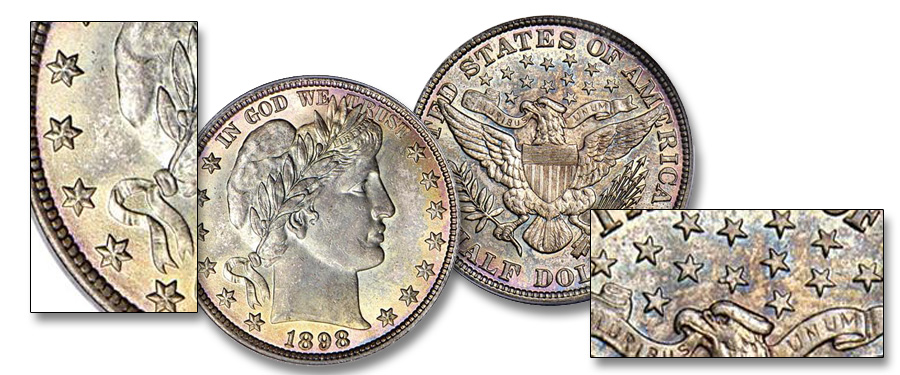
Question: Why do the stars on our coins have six points when our American flag has five-pointed stars?
Answer: In brief, there seems to be no standard policy among American coins as to which style is used, although six-pointed stars have been used more often. Barber quarter dollars (1892-1916) and Barber half dollars (1892-1915) are interesting in that they have 13 six-pointed stars on the obverse and a like number of five-pointed stars on the reverse, the latter being the so-called Heraldic Eagle adapted from the Great Seal of the United States. On many other coinage uses (including silver dollars 1798-1804) six-pointed stars appear.
The curious “Starred Reverse” large cent of 1794 has a circle of 94 five-pointed stars around the reverse rim among the denticles. James Ferrell’s reverse design for the 1991 Mount Rushmore commemorative half dollar includes a circle of five-pointed stars. Liberty Seated silver coins circa 1838-1891 have six-pointed stars on the obverse.
Somewhat similar discussions could be held concerning inconsistent uses of lettering on United States coins. Samples: On the reverse of the 1878-1921 Morgan dollar the motto IN GOD WE TRUST is in ornate Old English letters, not used for other lettering on the same coin. On the 1921-1935 Peace silver dollar, the U in TRUST on the obverse appears as TRVST, but on the reverse we see UNITED STATES OF AMERICA and E PLURIBUS UNUM, both with regular U’s.





